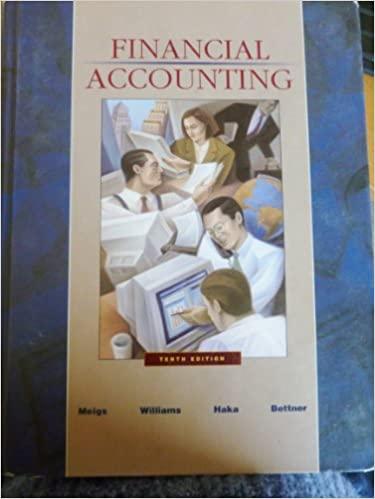Question
Is reducing Research and Development (R&D) expense always a positive? Question 1 options: It depends. Yes, always because reducing an expense improves margins. R&D should
Is reducing Research and Development ("R&D") expense always a positive?
Question 1 options:
| It depends. | |
| Yes, always because reducing an expense improves margins. | |
| R&D should be either consistent or increasing from one year to the next. | |
| No, R&D is critical to a firm and should rarely/never be reduced. |
Question 2 (11 points)
What items are included in the notes to the financial statements?
Question 2 options:
| Summary of accounting policies. | |
| Changes in accounting policies, if any. | |
| Detail about particular accounts. | |
| All of the above |
Question 3 (11 points)
The Statement of Other Comprehensive Income ("Income Statement #2") is:
Question 3 options:
| An income statement reported separately | |
| Not a real statement | |
| A section of the "MD&A" | |
| Disclosed only in the footnotes |
Question 4 (11 points)
What is the accrual basis of accounting?
Question 4 options:
| Recognition of revenue when it is received in cash | |
| Recognition of revenue in the accounting period when the sale is made rather than when cash is received | |
| Matching expenses with revenue in the appropriate accounting period. | |
| Both B and C |
Question 5 (11 points)
Which of the following may be omitted from the financial statements and the accompanying reports of public companies?
Question 5 options:
| Five-Year summary of selected data | |
| Financial results (e.g., Sales Revenue) separated by business segments | |
| Reputation of the company among its customers | |
| Both B and C |
Question 6 (11 points)
Which of the following is not considered an audit opinion?
Question 6 options:
| Unqualified Opinion | |
| Qualified Opinion | |
| Adverse Opinion | |
| Disclaimer Opinion | |
| All of the above are considered opinions |
Question 7 (11 points)
What information can be found in a proxy statement?
Question 7 options:
| Information on voting procedures | |
| Information on executive compensation | |
| Information on the breakdown of audit and non-audit fees paid to the audit firm. | |
| All of the above |
Question 8 (11 points)
What does Section 404 of the Sarbanes-Oxley Act of 2002 require?
Question 8 options:
| A statement by the company regarding the effectiveness of internal controls and a disclosure of any material weaknesses in a firm's internal control system. | |
| A ten-year jail sentence and $1million fine for violations of the act. | |
| Auditor independence, which prohibits audit firms from offering any services other than audit services. | |
| Rotation of audit partners every five years. |
Question 9 (11 points)
Which of the following are methods by which management can manipulate earnings and possibly lower the quality of reported earnings?
Question 9 options:
| Changing an accounting policy | |
| Ignoring inventory reported on the balance sheet that is obsolete | |
| Decreasing discretionary expenses | |
| All of the above |
Question 10 (11 points)
Saved
Which report includes a description of company or industry trends
Question 10 options:
| The Footnotes | |
| The Proxy | |
| The "MD&A" | |
| Both A and C |
Step by Step Solution
There are 3 Steps involved in it
Step: 1

Get Instant Access to Expert-Tailored Solutions
See step-by-step solutions with expert insights and AI powered tools for academic success
Step: 2

Step: 3

Ace Your Homework with AI
Get the answers you need in no time with our AI-driven, step-by-step assistance
Get Started


